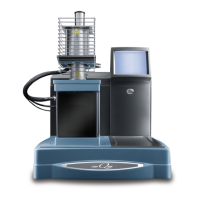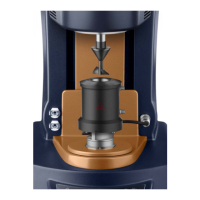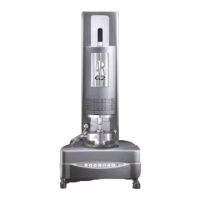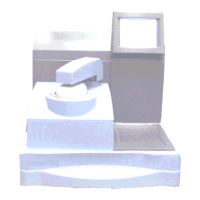TA I
NSTRUMENTS
TGA 2950 B–41
Hi-Res
TM
Option
The effect of adjusting the resolution setting in
dynamic rate mode while holding other experi-
mental factors constant can be seen in Figure
B.13 (page B-61).
Temperature
Calibration
TGA temperature calibration is useful if accu-
rate transition temperatures are required. The
major causes of temperature inaccuracy in a
TGA are thermal gradients between the sample
thermocouple and the sample being studied.
The magnitude of these gradients is proportional
to heating rate. The Hi-Res
TM
TGA techniques
inherently reduce thermal gradients by slowing
down the heating rate during transitions.
Another way to reduce the effect of thermal
gradients is to temperature calibrate the TGA.
The general procedure for temperature calibra-
tion is found in theonline help and documentation.
Temperature calibration involves analyzing a
magnetic standard to determine its curie tem-
perature. The curie temperature corresponds to
the extrapolated endpoint on the S shaped
thermal curve.
However, when the calibration is intended for
use with Hi-Res
TM
TGA experiments (i.e.,
dynamic rate, constant reaction rate or stepwise
isothermal), then a slow heating rate conven-
tional ramp of 5
o
C/minute or less should be used
for calibration. A faster ramp rate is only used
when calibrating for constant heating rate
experiments. The reason for this is that the Hi-
Res
TM
heating control system reduces the
heating rate during transitions.

